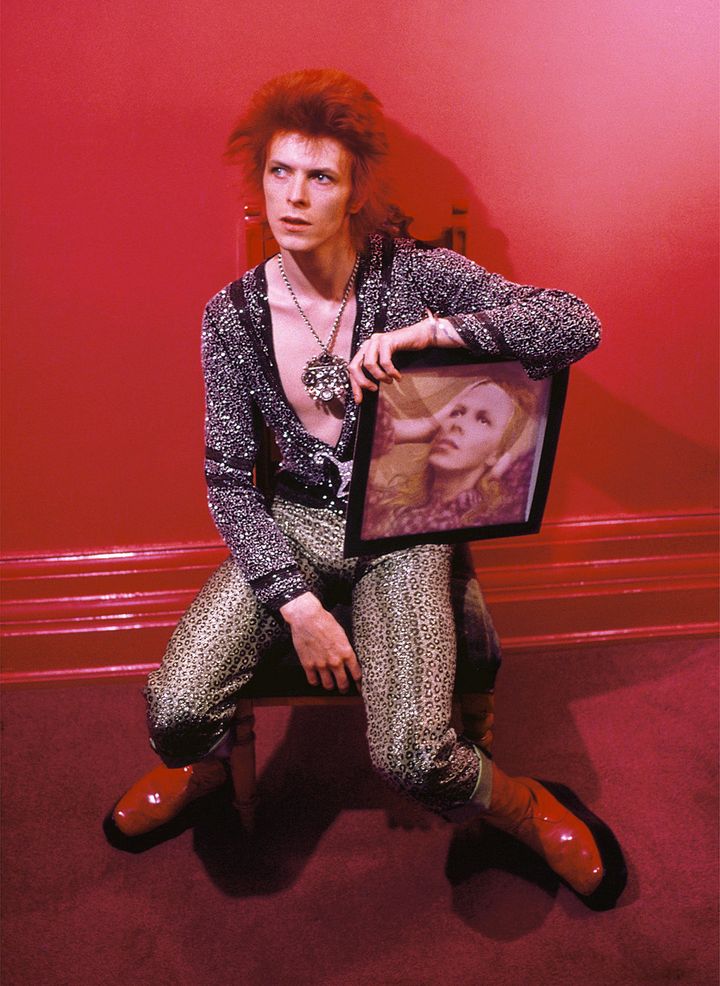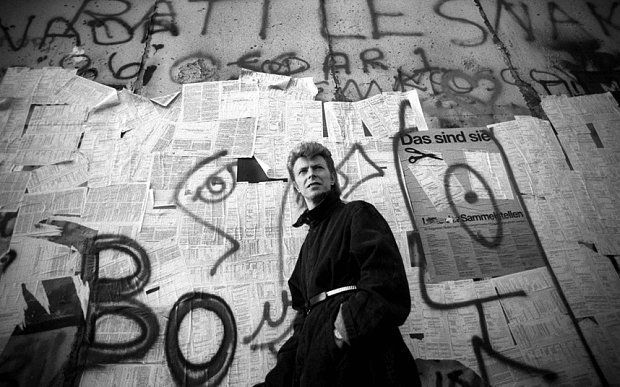Britain’s Royal Mail has announced it will honor the late David Bowie with a set of 10 stamps – the first time it has dedicated a set of stamps to a single musician. A spokesman explained that the issue will honor Bowie’s “many celebrated personas.”

David Bowie with cover artwork from Hunky Dory, 1971.
Joyce Carol Oates once mused that Bob Dylan “went through so many transformations, emotionally and musically and even physically, that he must be a fictional character.” Her observation might almost have served as a manifesto for David Bowie, who was often described as the chameleon of pop. Bowie’s fascination with Dylan stemmed in part from the fact that David Bowie was an assumed name (for David Jones), just as Dylan had been: Bowie’s 1971 “Song for Bob Dylan” opened with the declaration “Oh hear this Robert Zimmerman, I wrote a song for you” (echoing the song Dylan had written a decade earlier for his own idol – “Hey, hey, Woody Guthrie, I wrote you a song.”)

David Bowie in 1974, during recording of the Dutch television show TopPop.

The “Thin White Duke”: David Bowie in 1976.
Bowie emulated Dylan in creating new personas, but he did it more completely and carried it into more domains. During the 1970s, Bowie became sequentially Ziggy Stardust, Aladdin Sane, and the Thin White Duke, and used these characters not only in concert: Shelton Waldrep noted that Bowie extended the Ziggy persona “to life off the stage, where [he] would stay in Ziggy costume…and appear, for all intents and purposes, to be Ziggy all the time.” These personas may have confused not only fans, but Bowie himself: he later recalled that he “had become a total product of my concept character,” and that Ziggy “would not leave me alone for years…It became very dangerous. I really did have doubts about my sanity.”

David Bowie in 1978.
Bowie explained that “I didn’t have a style… [M]y style is changes.” He declared his decision to adopt ever new personas in his 1971 song “Changes,” and his art and identities were synthesized so completely from so many external sources that in that year he reflected that “Sometimes I don’t feel as if I’m a person at all. I’m just a collection of other people’s ideas.” He downplayed his own originality: “I’m not an innovator. I’m really just a photostat machine.”

David Bowie at the Berlin Wall, 1987.
From Picasso on, a succession of conceptual innovators have used deliberate stylistic versatility to hold off the decline of their youthful creativity. For David Bowie, however, his studious and radical artistic transformations could not prevent the loss of his early creativity. So for example all six of his albums included in Rolling Stone’s 2005 ranking of the 500 greatest albums of all time were made in the seven-year span from 1971-77, when he was 23-30 years old, and the top two of those – The Rise and Fall of Ziggy Stardust and the Spiders from Mars and Hunky Dory – were released at the beginning of that period, in 1972 and 1971 respectively. Not all changes are created equal: Shelton Waldrep reflected that “One might argue that [Bowie] learned everything in the seventies – especially in terms of approaches to making music and designing concerts – and merely replayed these lessons in different forms throughout the eighties and nineties, and perhaps beyond.”
